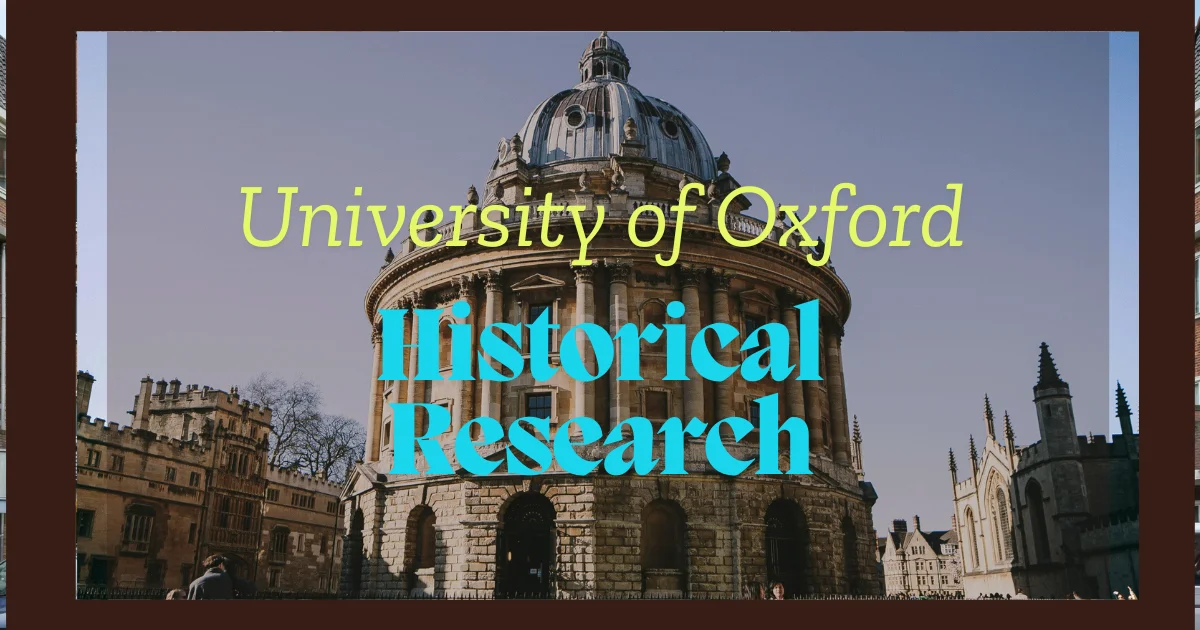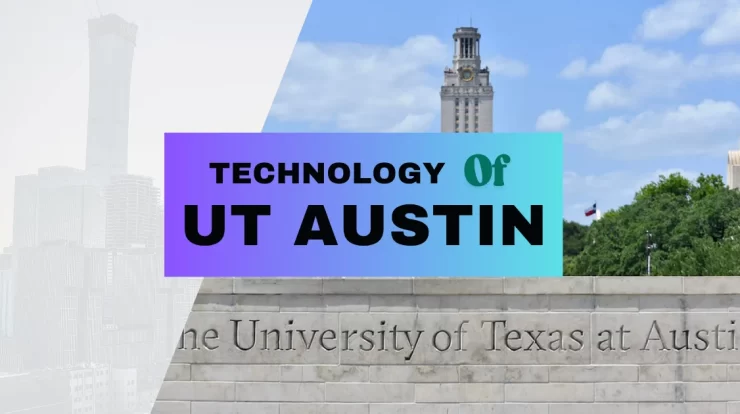
Do you want to express your knowledge at a research level? According to your topic, you need to find a historical research university like the University of Oxford.
Long praised for its tremendous intellectual results and legendary library, the University of Oxford is redefining historical research in the future. Oxford academics, who preserve centuries of intellectual legacy, are increasingly adopting digital technologies including virtual reality (VR), geographic information systems (GIS), and online repositories to change access, instruction, and study of history. Oxford’s audacious move from conventional archive research to a future firmly anchored in technological integration is investigated in this paper. Anyone fascinated by the changing terrain of historical research should read this.
Contents
- What Are the Main Research Areas at the University of Oxford?
- How Has Historical Research Traditionally Thrived at Oxford?
- Why Is Digital Transformation Crucial for Archival Collections?
- How Does Virtual Reality (VR) Bring History to Life?
- What Role Does Digital Mapping Play in Spatial Humanities?
- How Are Students Engaged in Research through Digital Innovation?
- What Makes Oxford a Leader in Global Research Collaboration?
- What Ethical and Technical Challenges Come with Digital Archives?
- How Is Oxford Preparing for the Future of Historical Studies?
- Why Does Oxford’s Innovation Matter for the World of Academia?
- Conclusion
What Are the Main Research Areas at the University of Oxford?
Though Oxford’s research quality covers several fields, history remains fundamental to its academic framework. Oxford’s historical research crosses other disciplines, including archaeology, political science, anthropology, religion, and linguistics. Essential topics of research are:
Cultural legacy and studies of manuscripts:
- Colonial and post-colonial histories
- Digital humanities and archival studies
- Religious and intellectual history
- Global historical perspectives
The University’s encouragement of multidisciplinary studies has motivated cooperative research among several departments. Scholars cooperate to digitize, curate, and distribute information worldwide via programs such as the Oxford Research Archive (ORA), REF entries, and research centers such as the Oxford Internet Institute. This supports Oxford’s leadership in academic innovation going forward.
How Has Historical Research Traditionally Thrived at Oxford?
Among Europe’s oldest and most essential library systems, the Bodleian Libraries reflect Oxford’s long-standing intellectual traditions. These libraries house nearly 13 million printed objects, including early printed books and medieval manuscripts;
• Rare ephemera and maps
• Correspondence from officials and personal letters
The university’s efforts at preservation and cataloging have given academics consistent access to physical resources. At Oxford, archival studies have traditionally concentrated on in-person access, thorough textual analysis, and document preservation. These approaches have kept priceless insights on world and regional histories intact for millennia, enabling the university’s modern research renown.
Oxford’s academic traditions have fostered a culture of thorough investigation and intellectual rigor. Hands-on access to archives, knowledgeable librarians, and well-chosen collections that remain fundamental to historical studies help both students and researchers.
Why Is Digital Transformation Crucial for Archival Collections?
Digital transformation is now significant in a time when knowledge must be both saved and available. Although very valuable, physical archives are prone to handling wear, environmental damage, and deterioration. Thus, Oxford gives digitizing priority to guarantee long-term access and conservation.
Digital transformation offers:
- high-resolution scans of rare objects.
- safe long-term storage with backup systems.
- more access to worldwide researchers.
- Improved metadata and indexing made possible by artificial intelligence technologies.
Digitization initiatives let Oxford translate fragile texts into digital formats kept on websites like the Digital Bodleian. These repositories guarantee thorough organization by using computerized cataloging and following rigorous metadata requirements. These materials are now easily available to scholars worldwide without physical restrictions.
Furthermore, the institution’s digitization projects support worldwide projects like digital scholarship and open-access publishing. This helps Oxford match more general academic trends that support fair knowledge sharing and the preservation of cultural legacy.
How Does Virtual Reality (VR) Bring History to Life?
Virtual reality (VR) alters knowledge of and experience with history. Using VR technology, Oxford’s scholars reconstruct historical events, records, and settings, enabling public involvement and immersive learning.
- VR finds use in historical study in the following ways:
- 3D reconstructions of old buildings or towns
- Interactive historical event simulations (such as trials, battles, or debates).
Sensual interaction with historical objects and settings.
VR fully submerges users in historically authentic virtual worlds, improving understanding, empathy, and critical thinking. Students and researchers walking around historic sites or investigating digital reconstructions of essential events can achieve more profound knowledge and interactive learning.
Oxford’s VR projects also promote public events, bridging the divide between academics and the public. These encounters teach and are emotionally powerful tools that inspire new generations to pursue historical research.
What Role Does Digital Mapping Play in Spatial Humanities?
Spatial humanities are emerging as a multidisciplinary study that utilizes geographic tools to investigate the spatial aspects of history. Digital mapping and GIS (Geographic Information Systems) let academics at Oxford integrate historical data with geographical sites.
Digital mapping facilitates scholars in:
- Create interactive maps including temporal and spatial overlays.
- See historical events throughout time and space.
- Examine how geography shapes migration, trade, or conflict.
Projects in spatial humanities let historians stack historical documents over contemporary maps to show changes in political borders, climate influence, or demographic patterns. This approach offers analytical depth and helps historical data be more understandable for academics and the public.
Drawing from environmental science, sociology, and digital technology, Oxford’s investments in spatial humanities improve interdisciplinary cooperation. These tools turn conventional stories into dynamic, graphic, data-rich storytelling.
How Are Students Engaged in Research through Digital Innovation?
Oxford guarantees students interact directly with new tools and technologies by including digital literacy within its course. Students learn abilities such as working with metadata, coding for digital archives, and creating VR materials.
Programs consist of:
- Digital curation, research, and training.
- Cooperative digital humanities projects;
- Internships with the digitizing team of Bodleian Libraries
This strategy guarantees that successive generations of researchers are skilled in historical analysis and ready to contribute to and invent within digital research infrastructure. Oxford’s focus on experiential learning raises the value of its academic offerings and improves student involvement.
Digital research options let students co-create knowledge. They not only absorb knowledge but also actively help to create digital tools and resources that will define historical research in the future.
What Makes Oxford a Leader in Global Research Collaboration?
Oxford’s worldwide alliances help expand the influence of its past research. Oxford supports major digitization and knowledge-sharing initiatives through partnerships with organizations such as the British Library, UNESCO, and Harvard University.
Among the noteworthy worldwide initiatives are:
- The “Transnational History of Capitalism” joint effort
- Colonial archives in Asia and Africa joint digitizing
- Collaborations with museums to preserve cultural legacy
Such cross-institutional effort aids policy creation improves public access to rare papers and artifacts and promotes worldwide scholarly conversation. Oxford’s leadership on these initiatives enhances its standing as a top research university worldwide.
These partnerships have important objectives in the worldwide academic community and support mutual learning, technology transfer, and cultural understanding.
What Ethical and Technical Challenges Come with Digital Archives?
As archive materials migrate online, new ethical questions and technical restrictions surface. These concerns are intellectual property rights and data privacy.
The digital divide—unequal access to digital resources; issues of sustainability and long-term preservation
Oxford tackles these problems by supporting open-access regulations, ethical research methods, and safe digital infrastructure investment. The university also actively studies optimal digital ethics practices, including upholding data integrity and fair presentation of underprivileged backgrounds.
Oxford encourages fair design in its platforms to address access inequalities and ensure that people from underdeveloped areas can profit from its digital archives.
How Is Oxford Preparing for the Future of Historical Studies?
Oxford is funding strategic thinking and new technologies to keep leading. Artificial intelligence (AI) is becoming increasingly relevant, helping with automated document classification and tagging, natural language processing for article translation, and predictive modeling on past patterns.
Oxford also supports ecologically friendly digital technologies, including low-energy data centers, cloud-based archive storage, and low-energy digitalizing techniques. The institution’s vision guarantees future accessibility and integrity of academic resources by balancing creativity with accountability.
Oxford’s vision plans also call for ongoing faculty development, infrastructural improvements, and a global conversation on the direction of research libraries.
Why Does Oxford’s Innovation Matter for the World of Academia?
Oxford’s historical research revolution provides a guide for contemporary academics. It shows how legacy institutions could change with technology to maintain intellectual integrity.
Global academia is impacted by encouraging multidisciplinary cooperation across institutions, raising digital literacy levels in humanities research, and supporting open-access information sharing worldwide.
By innovating sensibly, Oxford guarantees that historical research stays relevant, inclusive, and robust. Its innovative method underlines how crucial colleges are in tackling research problems of the twenty-first century.
Oxford’s mix of innovation and legacy can teach other schools comparable approaches based on their research models.
Conclusion
The approach of the University of Oxford toward digital innovation is changing the field of historical study. Oxford guarantees that history remains dynamic, accessible, and globally relevant by combining conventional studies with new techniques such as VR, GIS, and artificial intelligence. Its strategic goal opens new research, cooperation, and education directions by balancing preservation with development. From digitizing manuscripts to preparing future-ready academics, Oxford leads academic institutions by example. Oxford’s innovative method is a lighthouse showing that, as the digital age redefines our interaction with the past, tradition and technology may coexist peacefully in expanding human understanding.





